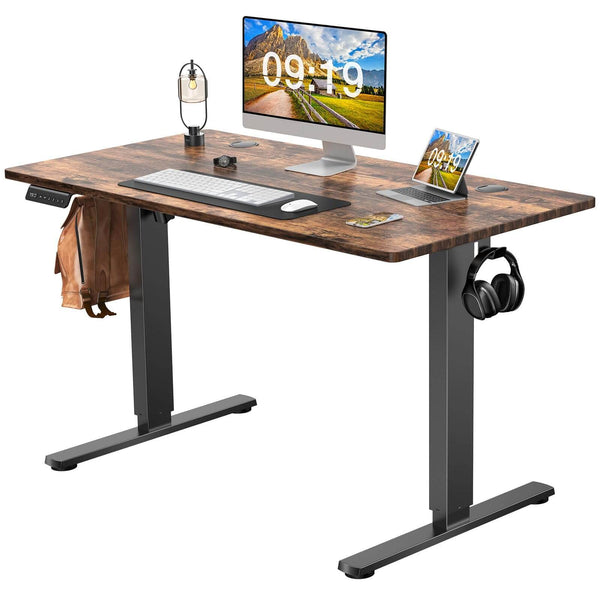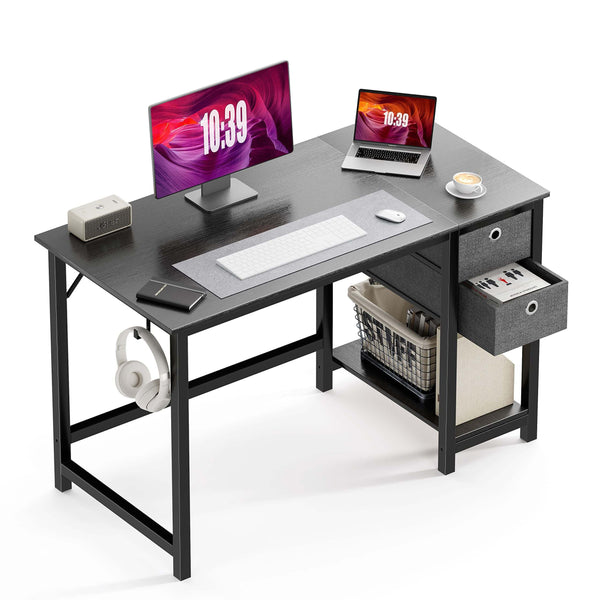The Ultimate Guide to Ergonomics: Sitting & Standing at Your Computer Desk
Introduction: Why Workspace Ergonomics Matter
Modern professionals spend approximately 1,800 hours annually at workstations (Bureau of Labor Statistics, 2024). Poor ergonomics contribute to:
-
49% increased risk of musculoskeletal disorders
-
23% productivity loss due to discomfort
-
Accelerated spinal degeneration
This guide merges evidence-based seated posture with dynamic standing strategies for holistic workspace wellness.

Section 1: Perfecting Seated Posture
1. The Gold Standard: 90-90-90 Alignment
-
Lower Body:
-
Feet flat (hip-width apart) with 90° ankle flexion
-
Knees at chair-edge level, 2-3 finger gap behind knees
-
Thighs parallel to floor (use height-adjustable chair)
-
-
Upper Body:
-
Elbows at 100-110° (slightly more than 90°)
-
Shoulders relaxed away from ears
-
Screen height ensuring 15-20° downward gaze angle
-
Clinical Insight: A 2023 BMJ study found this alignment reduces disc pressure by 40% compared to slouching.
2. Advanced Adjustments
-
Lumbar Support: Rolled towel or memory foam wedge (3-4cm thickness)
-
Armrests: Adjust to lift shoulders minimally (prevents trapezius strain)
-
Keyboard Tray: -5° tilt to maintain neutral wrists
3. Movement Integration
-
20-20-20 Rule: Every 20 minutes, look 20 feet away for 20 seconds
-
Microbreaks: 30-second stretches hourly (neck rolls, wrist circles)
Section 2: Optimizing Sit-Stand Workstations
The Science Behind Alternation
-
Metabolic Boost: Alternating every 30 minutes increases calorie expenditure by 54 kcal/hour (Mayo Clinic)
-
Cognitive Benefits: Standing enhances creative thinking by 17%
-
Postural Relief: Reduces lumbar compression by 35%
Transition Protocol
-
Beginner Phase (Weeks 1-2):
-
10 minutes standing per hour
-
Use timer apps like Stand Up! (iOS/Android)
-
-
Intermediate Phase (Weeks 3-4):
-
25 minutes standing every 75 minutes
-
Introduce balance board for active standing
-
-
Advanced Maintenance:
-
45-minute sitting / 15-minute standing cycles
-
Walking meetings for prolonged tasks
-
Equipment Essentials
Product CategoryKey FeaturesRecommended ModelsHeight-Adjustable DeskSmooth transition (≤3 sec), memory presetsUplift V2, Fully JarvisAnti-Fatigue MatGraduated density, bevelled edgesErgodriven Topo, Imprint CumulusPROMonitor ArmGas-spring adjustment, VESA compatibilityAmazonBasics Premium, Ergotron LX
Section 3: Synergized Daily Routine
Sample Schedule (Knowledge Workers)
Morning Deep Work (8:30-11:30):
-
50 min seated focused work → 10 min standing review
-
Incorporate balance board for light movement
Afternoon Collaborative Work (13:00-16:00):
-
Standing during calls/virtual meetings
-
Seated for detailed document editing
Ergonomic Assessments
-
Self-Check: Monthly photos comparing posture to ideal alignment
-
Tech Tools:
-
PostureScreen Mobile (posture angle analysis)
-
ErgoAI (real-time webcam feedback)
-
Conclusion: Building Sustainable Habits
Implement these changes gradually:
-
Week 1: Adjust chair and monitor height
-
Week 2: Introduce standing intervals
-
Month 2: Full ergonomic audit
Remember: "The best posture is your next posture" Invest in your workspace today for lifelong health dividends.



コメントを書く
Este site está protegido pela Política de privacidade da hCaptcha e da hCaptcha e aplicam-se os Termos de serviço das mesmas.